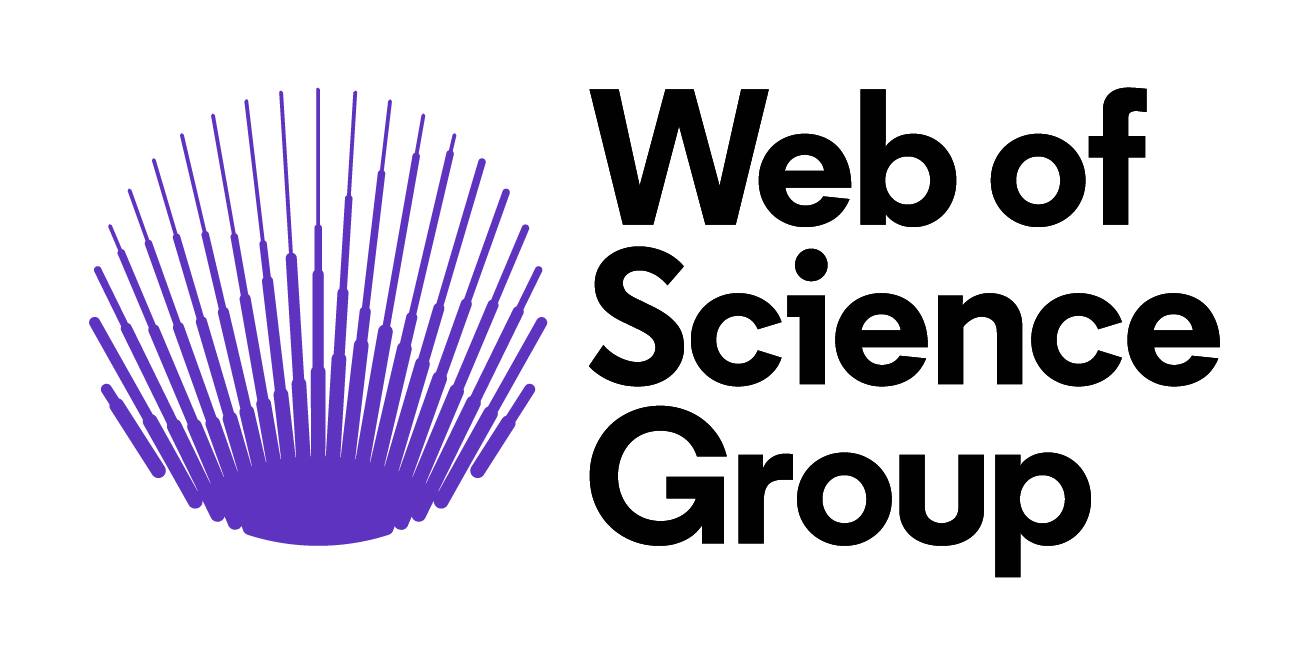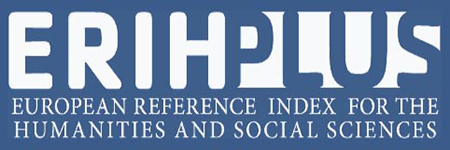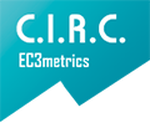Imágenes psicodélicas en The Holy Mountain (1973). Un análisis e interpretación del clásico de culto de Alejandro Jodorowsky
Resumen
El clásico de culto la montaña sagrada de Alejandro Jodorowsky se estrenó en 1973 y desde entonces ha disfrutado de un creciente estatus de culto, alimentado aún más por el reciente movimiento renacentista psicodélico. Con un tono humorístico, la montaña sagrada incorpora las ideas y valores de su época tales como el reto a las autoridades vigentes, y el rechazo a los cánones de vida tradicionales mediante la exploración de filosofías alternativas como las religiones orientales, la alquimia, la astrología y el tarot. Rica en imágenes psicodélicas arraigadas en la tradición psicoanalítica, la película sirve como una representación de la contracultura del momento. Con propósito de este artículo, revisaremos, analizaremos e interpretaremos el simbolismo mostrado en esta la montaña sagrada, que explora importantes temas pertinentes a la cultura visual psicodélica, tales como la descripción de diferentes sustancias y ceremonias psicodélicas, filosofías de la contracultura psicodélica, exploración del trauma, deconstrucción de las normas sociales y los efectos terapéuticos de las sustancias psicodélicas.
Descargas
-
Resumen387
-
PDF 602
-
EPUB 110
Citas
Adelaars, Arno. 2016. Ayahuasca: Rituals, Potions, and Visionary Art from Amazonia. Studio City, CA: Divine Arts.
Allegro, John Marco. 2009. The Sacred Mushroom and the Cross: A Study of the Nature and Origins of Christianity within the Fertility Cults of the Ancient Near East. 40th anniversary ed. S.l.: Gnostic Media Research & Publishing.
Brandrup, E., and T. Vanggaard. 1977. “LSD Treatment in a Severe Case of Compulsive Neurosis.” Acta Psychiatrica Scandinavica 55 (2): 127–41. https://doi. org/10.1111/j.1600-0447.1977.tb00149.x.
Breckenridge, Adam. 2015. “A Path Less Traveled: Rethinking Spirituality in the Films of Alejandro Jodorowsky.” The Journal of Religion and Film 19 (2): 0–1.
Buck, Stephanie. 2018. “Hiding in Plain Sight: Jung, Astrology, and the Psychology of the Unconscious.” The Journal of Analytical Psychology 63 (2): 207–27. https://doi. org/10.1111/1468-5922.12394.
Cobb, Ben. 2007. Anarchy and Alchemy: The Films of Alejandro Jodorowsky. London: Creation.
Coleman, R. 2017. Psychedelic Psychotherapy - a User Friendly Guide to Psychedelic Drug Assis. Transform Press.
Cruz, San Juan de la. 2017. Subida al Monte Carmelo. London: Ivory Falls.
Cruz-Grunerth, Gerardo. 2021. “Estetica de Lo Performativo En El Cine Ficcional de Alejandro Jodorowsky.” In 2021, Performatividades Contemporáneas. Teatro, Cine y Nuevos Medios, Paulo Gatica (Ed.)., 51–65. Madrid: Visor Libros.
Daumal, René, and Carol Cosman. 2004. Mount Analogue: A Tale of Non-Euclidean and Symbolically Authentic Mountaineering Adventures. Tusk ivories ed. Tusk Ivories. Woodstock: Published by Overlook Press.
Egginton, William. 2024. Alejandro Jodorowsky Filmmaker and Philosopher. London: Bloomsbury Publishing Plc.
Espi Forcen, Fernando. 2017. Monsters, Demons and Psychopaths: Psychiatry and Horror Film. Boca Raton: CRC Press.
Fadiman, James. 2011. The Psychedelic Explorer’s Guide: Safe, Therapeutic, and Sacred Journeys. Rochester, Vt: Park Street Press.
Fink, Jessica K. 2022. “Archetypal Tarot: The Art of Seeing Through.” Jung Journal 16 (2): 62–74. https://doi.org/10.1080/19342039.2022.2053470.
Garcia, Estevão. 2012. “O México de ALEJANDRO JODOROWSKY Em La Montaña Sagrada / Le Mexique d’ALEJANDRO JODOROWSKY Dans La Montagne Sacrée.” Cinémas d’Amérique Latine 20 (20): 4–23.
Hatsis, Thomas. 2015. The Witches’ Ointment: The Secret History of Psychedelic Magic. Rochester, Vermont: Park Street Press.
Hempfill, Jill. 2007. “The Films of Alejandro Jodorowsky: Fandoy Lis, El Topo, The Holy Mountain.” Hollywood: American Society of Cinematographers, 2007.
Hernández-Tubert, Reyna. 2023. “The Mexican Social Unconscious—Part I: The Roots of a Nation.” Group Analysis 56 (2): 204–17. https://doi.org/10.1177/05333164211013969.
Huxley, Aldous. 2009. The Doors of Perception. Modern Classics. New York: Harper Perennial.
Ichazo, Oscar. 2024. The Enneagram of The Fixations. Kent, CT: The Oscar Ichazo Foundation.
Institoris, Heinrich, Jakob Sprenger, and Montague Summers. 1971. The Malleus Maleficarum of Heinrich Kramer and James Sprenger. Dover Books on the Occult. New York, NY: Dover.
Jaramillo, Laura. 2020. “Ritual, Cult Spectatorship, and the Problem of Women’s Flesh in Alejandro Jodorowsky’s Midnight Movies.” Feminist Media Histories 6 (3): 172–206. https:// doi.org/10.1525/fmh.2020.6.3.172.
Jodorowsky, Alejandro, Rachael LeValley, and Alejandro Jodorowsky. 2010. Psychomagic: The Transformative Power of Shamanic Psychotheraphy. Rochester, Vt.: Inner Traditions.
Jodorowsky, Alejandro, Joseph Rowe, and Alejandro Jodorowsky. 2008. The Spiritual Journey of Alejandro Jodorowsky: The Creator of El Topo. 1. U.S. ed. Rochester, Vt: Park Street Press.
Johnson, F. G. 1969. “LSD in the Treatment of Alcoholism.” The American Journal of Psychiatry 126 (4): 481–87. https://doi.org/10.1176/ajp.126.4.481.
Jung, C. G., and Sonu Shamdasani. 1999. The Psychology of Kundalini Yoga: Notes of the Seminar given in 1932. Second printing, and First paperback printing. Bollingen Series 99. New Jersey: Princeton Univ. Press.
Lajus, Patrice. 2023. La montagne sacrée (La montaña sagrada, 1973) de Alejandro Jodorowsky. Edited by Simone Tarditi. Paris: Gremese.
Lanz, Paulina. 2022. “Afterlives of Tlatelolco: Memory, Contested Space, and Collective Imagination.” International Journal of Communication (Online) 16 (January):4709.
Leary, Timothy, Ralph Metzner, Ram Dass, and Karma-gliṅ-pa. 2007. The Psychedelic Experience: A Manual Based on the Tibetan Book of the Dead. New York: Citadel Press.
Lee, Martin A., Bruce Shlain, and Andrei Codrescu. 1992. Acid Dreams: The Complete Social History of LSD: The CIA, the Sixties, and Beyond. Rev. Evergreen ed. New York: Grove Press.
Lindstrom, Naomi. 2013. “La Expresión Profética y Apocalíptica En La Producción de Alejandro Jodorowsky.” Chasqui 42 (2).
Lutkajtis, Anna, and Jules Evans. 2023. “Psychedelic Integration Challenges: Participant Experiences after a Psilocybin Truffle Retreat in the Netherlands.” Journal of Psychedelic Studies 6 (3): 211–21. https://doi.org/10.1556/2054.2022.00232.
Macnab, A., and A. Jodorwsky. 1999. “Alejandro Jodorowsky Talks about Making The ‘Holy Mountain’, a Film Financed by John Lennon.” Sight and Sound (London) 9 (6): 58–59.
Marques, Tatiana Lee. 2014. “Climbing The Holy Mountain--Alejandro Jodorowsky’s Mystical Cinema/Subindo a Montanha Sagrada--O Cinema Mistico de Alejandro Jodorowsky.” Revista Croma, Lisboa 4 (July):217.
McConnell, William S., ed. 2004. The Counterculture Movement of the 1960s. American Social Movements. San Diego: Greenhaven Press.
Melnyk, George. 2023. The Transformative Cinema of Alejandro Jodorowsky. New York [New York]: Bloomsbury Academic.
Noheden, Kristoffer, and Abigail Susik. 2021. “The Alchemy of Surrealist Presence in Alejandro Jodorowsky’s The Holy Mountain: Absolutely Modern Mysteries.” In Surrealism and Film after 1945: Absolutely Modern Mysteries. Manchester: Manchester University Press.
Pavich, Frank, dir. 2013. Jodorwsky’s Dune. Sony Pictures Classics.
Pecotic, David. 2015. “Mountains Analogous? The Academic Urban Legend of Alejandro Jodorowsky’s Cult Film Adaptation of René Daumal’s Esoteric Novel.” Journal for the Academic Study of Religion 27 (3): 367–87. https://doi.org/10.1558/jasr.v27i3.25736.
Preller, Katrin H., and Franz X. Vollenweider. 2018. “Phenomenology, Structure, and Dynamic of Psychedelic States.” Current Topics in Behavioral Neurosciences 36:221–56. https:// doi.org/10.1007/7854_2016_459.
Robertson, Robin. 2017. “Alchemy as a Psychological Model.” Psychological Perspectives 60 (2): 240–54. https://doi.org/10.1080/00332925.2017.1314709.
Rogers, F. B. 1991. “Rising Stars: Carl G. Jung and Astrology.” Transactions & Studies of the College of Physicians of Philadelphia 13 (2): 167–71.
Santos, Alessandra. 2017. The Holy Mountain. New York: Columbia University Press.
Selvin, Joel. 1999. Summer of Love: The inside Story of LSD, Rock & Roll, Free Love, and High Times in the Wild West. 1st Cooper Square Press ed. New York: Cooper Square Press.
Semetsky, Inna, ed. 2013. “Jung and Tarot: A Theory-Practice Nexus in Education and Counselling.” In Jung and Educational Theory. Malden, MA: Wiley-Blackwell, a John Wiley & Sons, Ltd., Publications.
Torre Espinosa, Mario de la. 2019. “The Influence of French Vanguardism in the Panic Theatre by Fernando Arrabal.” GRANADA: Assoc Cultural Impossibilia 17 (May):219–44.
Veloso Garcia, Eduardo. 2015. “Surrealist Characteristics in the Film Holy Mountain, by Alejandro Jodorowsky.” ArReDia 3 (5): 35–46.
Witte, Michael Newell. 2023. “H. P. Blavatsky and Alejandro Jodorowsky: The Influence of the Russian Orthodox Church and Theosophy on Psychomagic in El Topo and The Holy Mountain.” In The Films of Alejandro Jodorowsky. ReFocus. The International Directors Series. Edinburgh: Edinburgh University Press.
Derechos de autor 2025 Fernando Espí Forcén

Esta obra está bajo una licencia internacional Creative Commons Atribución-CompartirIgual 4.0.
Las obras que se publican en esta revista están sujetas a los siguientes términos:
1. Los autores ceden de forma no exclusiva a la revista los derechos de explotación (reproducción, distribución, comunicación y transformación).
2. Las obras que se publican en esta revista están sujetas a la licencia Attribution-ShareAlike 4.0 International (CC By SA 4.0). Por lo que se pueden copiar, usar, difundir, transmitir y exponer públicamente, siempre que:
i) se cite la autoría y la fuente original de su publicación (revista, editorial y URL de la obra), permitiendo así su reconocimiento.
ii) se permite remezclar, transfromar o crear a partir del material mientras se mantenga la misma licencia del original.
3. Condiciones de auto-archivo. Se permite y se anima a los autores a difundir electrónicamente las versiones pre-print (versión antes de ser evaluada) y/o post-print (versión evaluada y aceptada para su publicación) de sus obras antes de su publicación, ya que favorece su circulación y difusión más temprana y con ello un posible aumento en su citación y alcance entre la comunidad académica. Color RoMEO: verde.
























